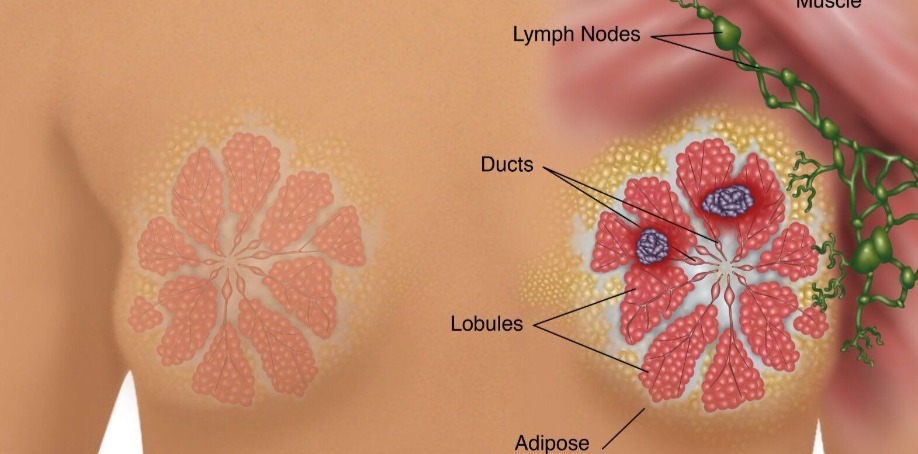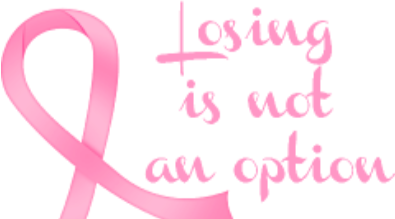How to Reduce Your Risk of Having Breast Cancer?
Everyone is familiar with someone who has battled breast cancer, and many of you have probably done so yourself.
I genuinely hope and pray that soon, our most brilliant scientists and researchers will discover a 100% cure for cancer, a terrible disease affecting all types of people.

Dr Disha Sridhar
I am a Gynaecologist Obstetrician ( MD, DNB OBGYN) with an emphasis on INTEGRATIVE MEDICINE.

Our attention must be on maintaining our best health by staying physically active, controlling inflammation, and educating ourselves about preventive measures and cancer risk factors for our loved ones in the interim. We can make choices to lower the increased breast cancer risk.I am constantly thinking about and incorporating "optimal breast health" into my protocols and family's health routine, especially now that I have two daughters.
Recognizing Your Risks
Breast cancer is one of the most prevalent cancers in women’s parts of the body, according to the studies & surveys. And did you know that ladies 50 years or older make up most breast cancer cases? So let's do everything we can to lower our ongoing breast cancer risk, especially for those who have passed the magical 50-year mark. However, as we are all aware, there are numerous things you can do on a daily and annual basis to help you avoid high cancer risk factors and contracting this horrible disease.
While there is a genetic component to breast cancer, let's be clear: around 90% of your risk comes from the environmental exposures and lifestyle choices YOU make.
You can therefore affect that 90%!
Here is a quick summary of cancer risk factors as we understand them today !
● Prior breast cancer: It's crucial to maintain regular examinations and suggested breast cancer detection screenings if you've ever had breast cancer. You are also at a higher risk if you had a breast biopsy that revealed "lobular carcinoma in situ" and "atypical ductal hyperplasia" which increase the risk breast cancer.
● Genetics and family history: Invasive breast cancer is a one in eight-lifetime risk for women, but this risk is two to three times higher for women with a first-degree relative who has the disease (mother, sister, or daughter) than for women who have no family history of breast (or ovarian) cancer.
A "family history" of breast cancer accounts for about 9% of cases, but the BRCA1 and BRCA2 hereditary genes, which are less common, account for much less of the disease. Breast, ovarian, and colon cancers are more frequently linked.
Your risk rises as a result of:
● If your mother, sister, or daughter had breast cancer.
● The risk of cancer increases if your family had breast or ovarian cancer for several generations.
● The risk of cancer increases if your relative was recently diagnosed with breast cancer (under 50 years old).
● The risk of cancer increases with relatives who experienced breast cancer in both breasts.
● BRCA1 and or BRCA2 positive
● Having dense breasts: Because there is more connective tissue than fatty tissue, dense breasts might make tumors challenging to identify on mammography.
Environmental and lifestyle factors:
● Smoking and passive smoking.
● Obesity or not maintaining a physically active lifestyle, specifically weight gain in adults.
● Consuming Alcohol.
● DDT exposure and pesticide pollutants (although this research has been inconsistent).
● Early-stage of menstruation (Women who begin having periods before the age of 12 are exposed to hormones for longer, which slightly increases the chance).
● Birth of the first child at an older age or never having had children.
● Late menopause.
● Menopausal women taking Premarin and Provera for a prolonged period have an increase breast cancer risk of 8 per 10,000 women.
● Breast cancer risk increases after using oral estrogen and progesterone (progestin) combined for more than five years.
● Ionizing radiation exposure.
Your top priority should be to lower overall inflammation in your body.
The "positive influence" of diet (also known as nutrition!) and lifestyle decisions on lowering inflammation and breast cancer risk is possible.
1. SHE-TO METHOD OF EATING which is alkaline based is foundational. (When and what you eat matters when it comes to reducing inflammation):
This dietary approach has been shown to be anti-inflammatory in studies.
Lower incidences of cancer, cardiovascular disease, and other chronic diseases have been related to an alkaline diet. Studies on animals and cells have revealed that acidic conditions promote tumour growth and may enhance the spread of cancer.
At TruHealing, as an integrative medicine practitioner, I offer various programs for a healing procedure without synthetic Hormones.
Scientific evidence from numerous studies has also shown that being in a ketotic state can aid in the battle against cancer. It may even be effective in treating conditions like Alzheimer's and Parkinson's disease and reducing general inflammation and blood sugar problems (diabetes, insulin resistance). In addition, it can assist you in shedding extra, unhealthy weight.
2. Intermittent fasting: Following intermittent fasting may decrease breast cancer chances. According to one study, the time between breakfast and dinner greatly impacted breast cancer risk. Any fasting period longer than 12.5 hours was associated with a significantly reduced risk than shorter fasting periods.
Theoretical explanations for these results suggest that intermittent fasting may enhance glucose regulation (improving your sensitivity to insulin and reducing insulin resistance). It makes sleeping better (a lot of research indicates that less than 6 hours of sleep per night can cause ongoing low-grade inflammation, which is linked to many diseases, including breast cancer).
3. Natural remedies can also boost your immune system and offer anti-inflammatory support.
Turmeric: Since ancient times, turmeric has been used as a medication to treat liver illness, infections, colds, and wounds. According to studies, the turmeric ingredient curcumin may lessen bodily inflammation.
Ginger: In traditional medicine, ginger has been used to treat infections, headaches, and upset stomachs. Since ancient times, ginger has been recognized for its ability to reduce inflammation; studies have verified this.
Citrus fruits: Vitamin C, beta-cryptoxanthin, beta carotene, folate, and flavonoids like quercetin, hesperetin, and naringenin are just a few the anti-breast cancer substances that are abundant in citrus fruits. These nutrients have anti-inflammatory, anticancer, and antioxidant properties. Citrus fruits have been linked in research to a lower risk of cancer, particularly breast cancer.
Fatty fish: Salmon, sardines, and mackerel are just a few examples of the tremendous health advantages of fatty seafood. Their selenium content, omega-3 fatty acids, and antioxidants may have cancer-preventing properties. According to studies, eating fatty fish may lower your risk of developing breast cancer.

The Crucial Role of Prevention: The Value of Self-Checks, Medical Exams, and Testing
Your health, including the health of your breasts and all of your lady parts, ultimately rests with YOU. Or, if you're a man reading this, support the ladies in your life by urging them to have their regular checkups and screenings for breast cancer! The key is early detection.
Self-examination of Breasts:
Visual inspection is always the initial stage in breast self-examination.
Yes, doing this involves looking at your nude body in the mirror!
Step 1: Look for any pulling, dimpling, or inversion (pulling in) of the nipple when you raise your hands over your head. Check for any lumps, redness, swelling, nipple orientation, or changes in skin colour.
Step 2: Continue looking; at this point, pull your arms down, push in with your waist utilizing your chest muscles, and press your hands together over your head. The pectoral muscles are tightened by it. The connective tissue above the muscle will adhere to the connective tissue under the skin if a tumour develops beneath the skin. If the skin changes, dimpling appears, or there is any other irregularity, let your doctor know.
Step 3: With one hand over your head, examine your breasts while standing or sitting in the shower (soapy wet skin makes it easier to feel). On the other hand, feel above your clavicle and under your arm for any lumps, bumps, abnormalities, soreness, and discharge. Applying gentle, medium, and deep pressure is recommended while using the soft pads of your three middle fingers.
Be careful to check the entire breast, from the area under the arm to the centre of your chest, then switch sides and repeat the same on the other side. As long as you are consistent and conduct your exams, in the same manner each time, it doesn't matter which motion you use. If an issue arises, you will be able to tell the difference.
Step 4: Finally, sit down, take your time, and perform a second breast exam just like you did the first one.
Step 5: Inform your doctor of any unusual discoveries, then follow up!
Physician Examinations:
Annual breast exams should be performed by your doctor, who will perform the same seated and lying examinations described above while inspecting your breasts. Mammography, ultrasound, or biopsy is frequently performed in the event of anomalies.
Based on personal and family history, some individuals visit their doctor more frequently than twice a year.
Screenings (Mammograms, Ultrasounds, MRIs, Biopsies)
I am aware that screenings can be frightful. False-positive results might occur occasionally, and you might get a follow-up contact. It will all work out alright in the end, but please remember how crucial it is to perform routine inspections.
Even though mammograms cannot stop breast cancer, they can save lives by spotting the disease early. In women over 50, mammograms have been proven to reduce the risk of dying from breast cancer by 35%.
At the moment, we advise women to get a baseline mammogram at age 40 and then yearly starting at age 45. However, mammograms are rarely flawless; sometimes, the disease can be hidden by dense breast tissue.
If you are considered to be at a higher risk for breast cancer, screening recommendations may be made more frequently.
A final note on screenings.
Many doctors will remind you of your yearly checkup and mammogram, but you must remember to put it on your calendar.

Truhealing offers multiple treatment programmes for cancer prevention. We even provide holistic treatment for ladies who want to keep themselves healthy to avoid cancer. Let's take care of our beautiful bodies and minds as well!
Wishing you great health!!
Originally published JULY 12, 2022 by Dr Disha Sridhar
- Early breast cancer in the older woman - ncbi.nlm.nih.gov https://www.ncbi.nlm.nih.gov/pmc/articles/PMC3874410/
- Hereditary Breast Cancer and BRCA Genes - cdc.gov https://www.cdc.gov/cancer/breast/young_women/bringyourbrave/hereditary_breast_cancer/index.htm
- Environmental and lifestyle risk factors of breast cancer in Malta—a retrospective case-control study - https://www.ncbi.nlm.nih.gov/pmc/articles/PMC5029064/
- Nightly prolonged fasting (ketogenic lifestyle factor), greater than 13 hours also showed a decrease in breast cancer - National Library of Medicine https://pubmed.ncbi.nlm.nih.gov/27032109/
